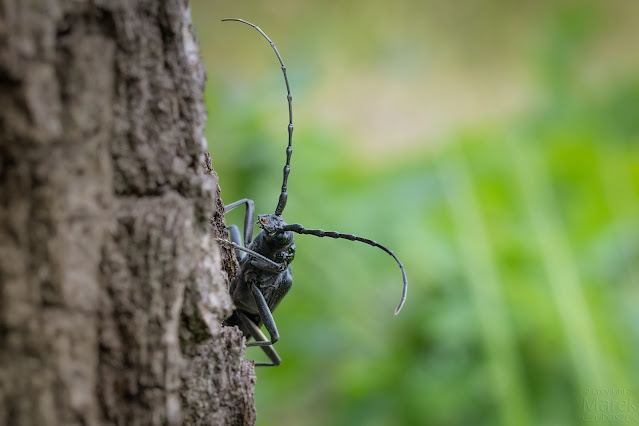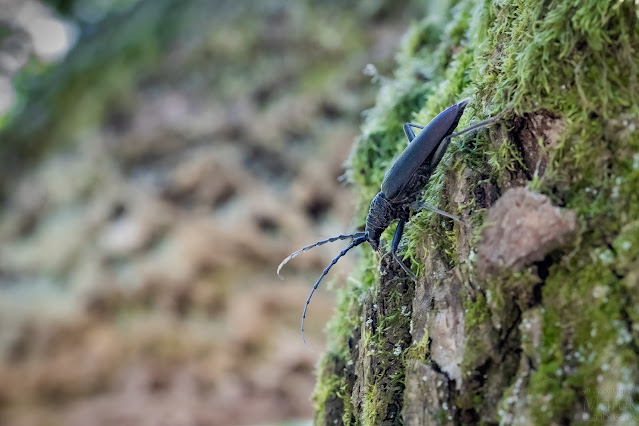AN ALIEN
Contrary to the title, this will not be an entry about aliens 😊, but about our "earthly beings" - the existence of which we may not even know, but living next to us.
The season for watching and photographing our largest beetles is in full swing.
The stag beetles are almost gone, so it's time for another giant.
The Great Capricorn (Cerambyx cerdo) - although it looks huge, unfortunately it is not the leader in terms of size.
 |
| Adult couple - in the foreground - the male |
Sometimes you can see thumb- size holes on oak trees - these are most likely signs of great capricorn, or rather adults that have emerged after metamorphosis.
 |
| Made by Great Capricorn |
 |
| An old log with visible traces of feeding by Great Capricorn larvae |
 |
| The female lays eggs |
What's more, when we look at them at high magnification, we can see certain details of their construction and only then can we see how creative Mother Nature is.
Great Capricorn are protected as an endangered species, and although the larvae feed on old oak trees, which are sometimes even natural monuments, they are not exterminated.
We are lucky that the largest population of the Great Capricorn in Poland occurs in Lower Silesia, in the Barycz Valley Landscape Park.
They are most often seen in the evening on warm and muggy days.
We don't touch or pick them up - they may bite in self-defense.
It's best to observe and enjoy their beauty, because it may happen (hopefully not) that the subsequent generations will only know them from books.



















Comments
Post a Comment